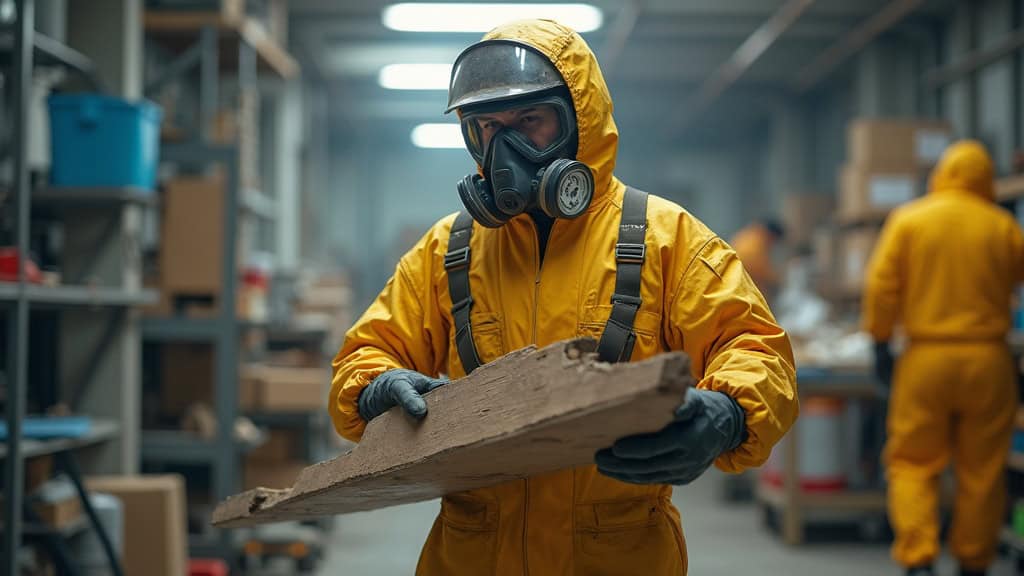In today’s construction industry, ensuring the safety of workers and future occupants is paramount. One critical aspect of this safety is the accurate testing for asbestos and, when needed, its proper asbestos removal. Asbestos is a hazardous material that was once widely used in building materials. Understanding the importance of asbestos testing and removal—and their role in modern safety standards—is essential for anyone involved in construction or renovation projects.
Understanding Asbestos and Its Risks
Asbestos is a naturally occurring mineral that was extensively used in the past due to its heat resistance and insulating properties. However, it poses significant health risks when its fibers become airborne and are inhaled. These fibers can cause serious diseases such as asbestosis, lung cancer, and mesothelioma. Therefore, identifying and managing asbestos in buildings—including complete asbestos removal where required—is crucial to protect public health.
Why an Asbestos Survey is Essential Before Any Construction Work
Before embarking on any construction or renovation project, conducting an asbestos survey is a critical step. This survey helps identify the presence and condition of asbestos-containing materials (ACMs) in a building. Understanding why an asbestos survey is essential highlights the importance of preventing exposure to this hazardous material. By identifying ACMs early, construction teams can plan appropriate measures to manage or proceed with asbestos removal safely and effectively.
The Process of Conducting an Asbestos Survey
Conducting an asbestos survey involves several key steps to ensure thorough and accurate results. The process typically includes:
- Initial Assessment: A preliminary evaluation of the building to determine the likelihood of asbestos presence.
- Sampling: Collecting samples of suspected materials for laboratory analysis.
- Laboratory Testing: Analyzing samples to confirm the presence and type of asbestos.
- Report Generation: Compiling a detailed report outlining the findings and recommendations for managing or carrying out asbestos removal, if necessary.
Legal Requirements and Compliance
In many countries, there are strict regulations governing the management of asbestos in buildings. Compliance with these regulations is not only a legal obligation but also a moral one to ensure the safety of all individuals involved. Failure to comply can result in severe penalties and increased liability for property owners and contractors. Professional asbestos removal services help meet these legal requirements efficiently and safely.
Benefits of Accurate Asbestos Testing
Accurate asbestos testing offers numerous benefits, including:
- Enhanced Safety: Protects workers and occupants from exposure to harmful asbestos fibers.
- Informed Decision-Making: Provides critical information for planning safe construction or renovation activities, including whether asbestos removal is necessary.
- Regulatory Compliance: Ensures adherence to legal requirements, reducing the risk of fines and legal issues.
- Cost Savings: Prevents costly delays and unexpected expenses associated with unmanaged asbestos.
Choosing a Qualified Asbestos Testing Professional
To ensure the accuracy and reliability of asbestos testing, it is essential to engage a qualified professional. Look for certified asbestos inspectors or consultants with a proven track record in conducting thorough surveys and providing comprehensive reports. Their expertise will be invaluable in navigating the complexities of asbestos management and coordinating proper asbestos removal when needed.

Conclusion: Prioritizing Safety in Construction
In conclusion, the role of accurate asbestos testing—and safe asbestos removal—in modern safety standards cannot be overstated. By understanding the risks associated with asbestos and the importance of conducting thorough surveys, construction professionals can prioritize safety and compliance. This proactive approach not only protects health but also ensures the successful completion of construction projects without unnecessary complications.







